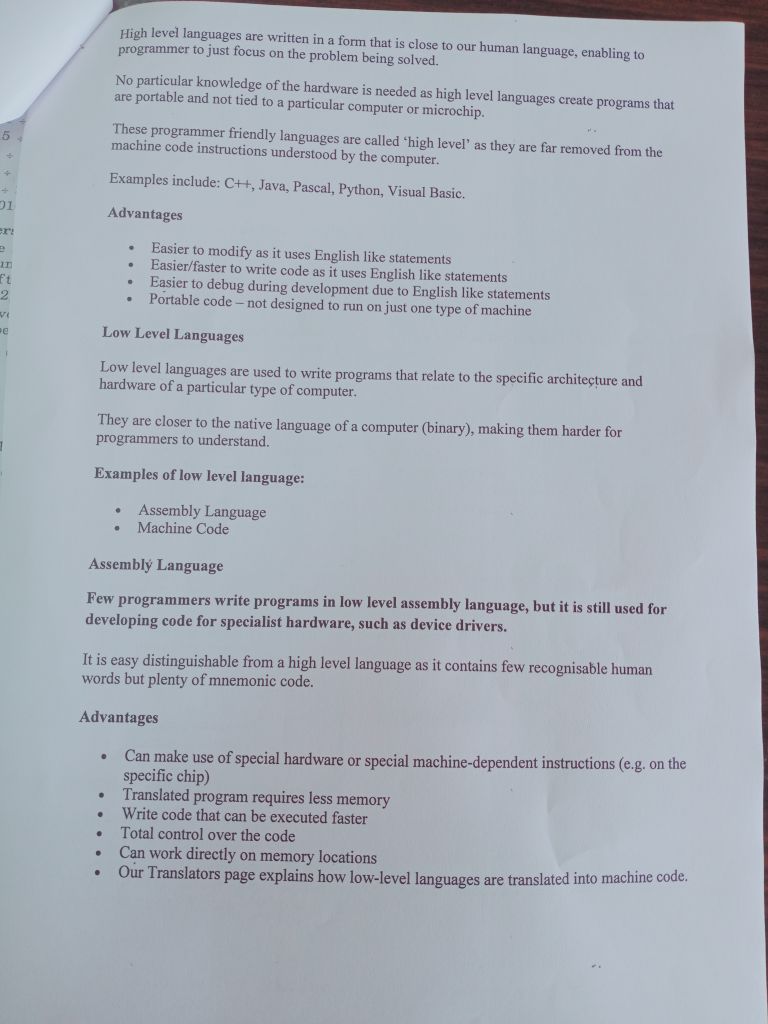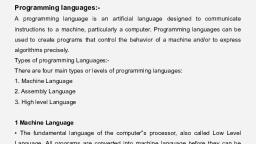Page 1 :
High level languages are written in a form that is close to our hum in language, enabli, ages se t0 01 an language, enabling to, Programmer to just focus on the problem being solved = s, , These programmer friendly languages are called “high level’ as they are far removed from the, machine code instructions understood by the computer., , Examples include: C++, Java, Pascal, Python, Visual Basic, Advantages, , + Easier to modify as it uses English like statements, + Easier/faster to write code as it uses English like statements, , + Easier to debug during development due to English like statements, * Portable code — not designed to run on just one type of machine, , Low Level Languages, , Low level languages are used to write programs that relate to the specific architegture and, hardware of a particular type of computer., , They are closer to the native language of a computer (binary), making them harder for, programmers to understand., , Examples of low level language:, , + Assembly Language, * Machine Code, , Assembly Language, , Few programmers write programs in low level assembly language, but it is still used for, developing code for specialist hardware, such as device drivers., , It is easy distinguishable from a high level language as it contains few recognisable human, words but plenty of mnemonic code., , Advantages, , * Can make use of special hardware or special machine-dependent instructions (e.g. on the, specific chip), , + Translated program requires less memory, , + Write code that can be executed faster, , + Total control over the code, , * Can work directly on memory locations i, , * Our Translators page explains how low-level languages are translated into machine code,




































